The second of last year’s reports from my trip to Jerusalem, first posted on Facebook on 11 July 2014. Once again, ligthly edited and with the addition of photographs.
It’s Friday, Muslim holy day of prayer. But in Jerusalem, this particular Friday is not just that. Not only it’s in the month of Ramadan but also in a week where rockets have been flying out of Gaza aiming at the city and in return Gaza is being pummelled by the Israeli Air Force with the BBC reporting 100 dead already. To say things are tense would be far from stretching the truth.
The old city within the walls feels under siege. Checkpoints have been set up at every gate and as the day progresses controls are getting tighter. Police and army presence has increased exponentially. There’s practically a small battalion outside the Austrian Hospice (AH) now, and tired Israeli soldiers have replaced the shabab (Arab youth) on the steps. But just like the shabab, they won’t move when you approach to enter the hospice unless you ask them to.
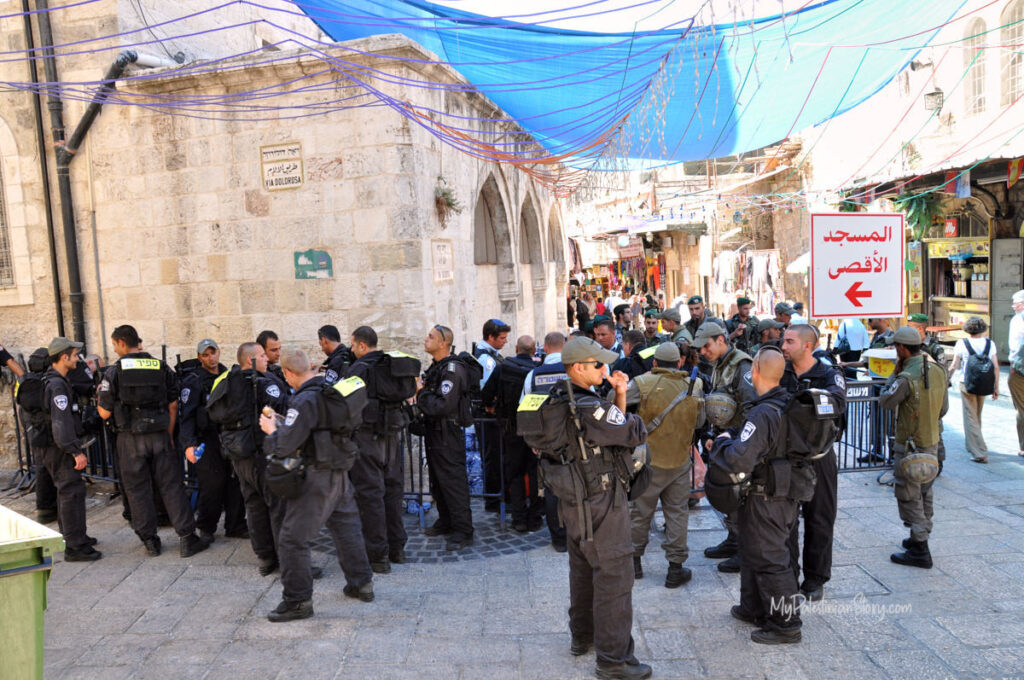
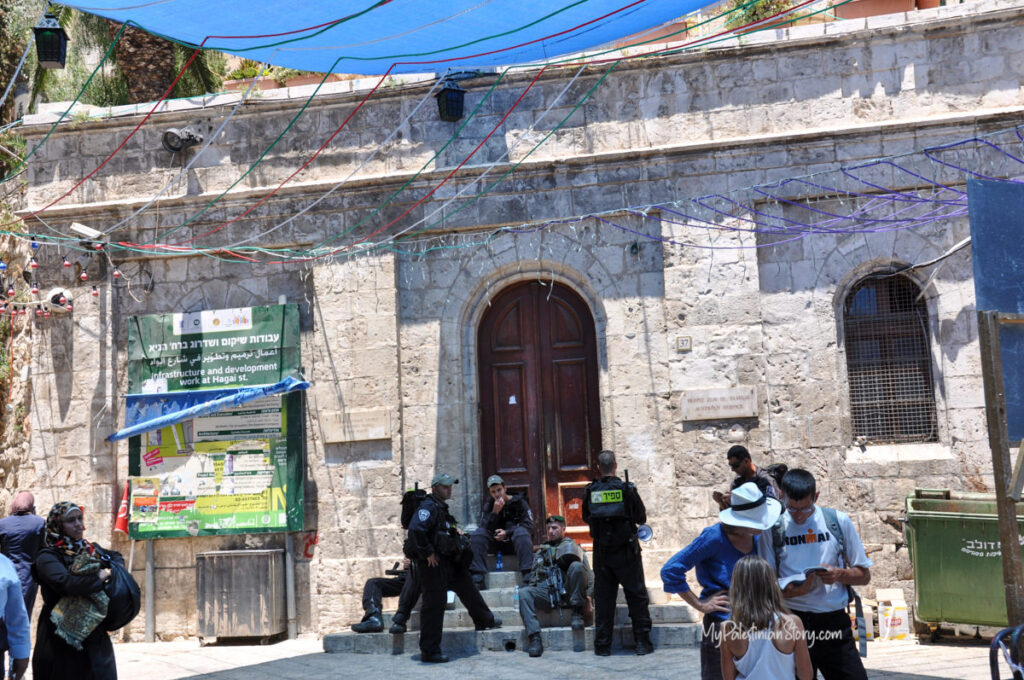
There’s a security zeppelin and helicopters flying overhead. I’m having a light lunch, comfortably ensconced once again in the breezy garden of the Austrian Hospice, cooling off after walking all over the place in the scorching sun.
Notre Dame de Sion Ecce Homo Convent is only a few doors up the Via Dolorosa from AH. It is where my maternal grandmother, Paraskevi (Vitsa) Schtakleff, went to school sometime in the 1910s-20s. I started my day with a visit there to enquire if they had any records with her name on. They no longer run a school, but a very kind Australian nun took down my details to pass them to the archivist. She also offered to give me a short tour of the place: the basilica as well as the rooftop, access to which is normally restricted. It was a real privilege given the fantastic views of the old city with all its domes and spires. Incidentally it was Sister Bernadette who pointed out the security zeppelin.
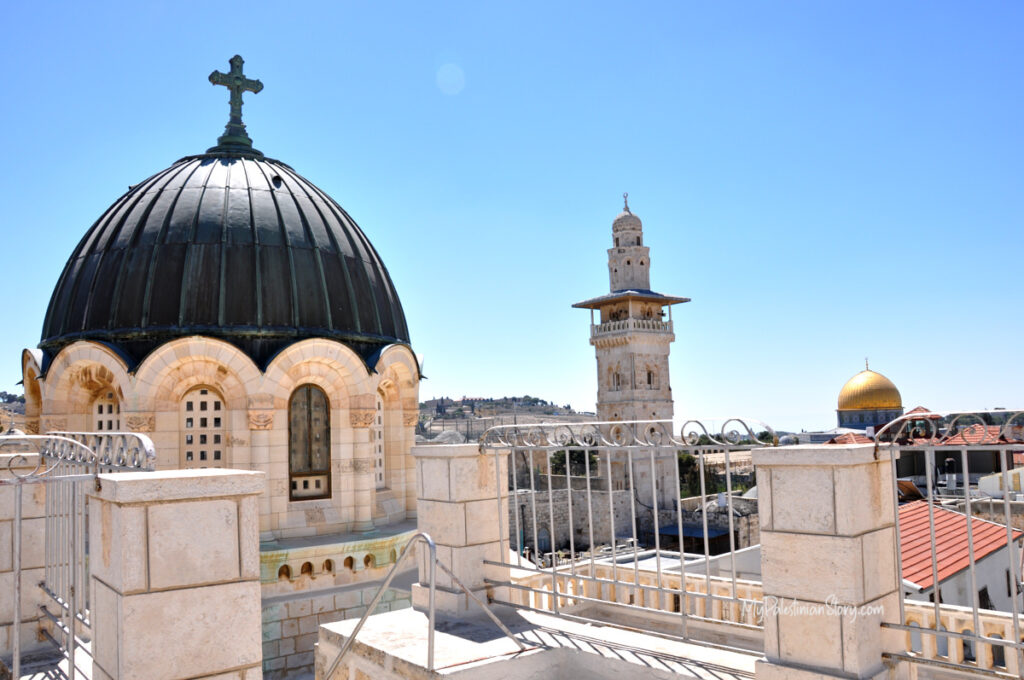
As I exited, a group of Spanish-speaking Christian pilgrims were making their way down Via Dolorosa, singing melodiously: ‘Caminaré en presencia del señor‘ (I will walk in the presence of the Lord). Meanwhile hordes of Muslim pilgrims streamed through Damascus Gate, past the hotel, heading for Al-Aqsa mosque, their numbers having increased significantly, too, compared to the past few days. A new addition to the scene is the scores of women who are lining the streets, sitting on the ground, covered from head to toe, palms extended. Almsgiving is one of the five pillars of Islam so I suppose they’re banking on that.
My next stop would be close to New Gate. An argument brewing between soldiers and a civilian held up pedestrian traffic but I managed to sneak through only to get lost in the maze of streets, and ended up walking the length of the entire Arab market all the way back to Damascus Gate. Rather than try to navigate again the crowded alleys of the old city, I decided to take a shortcut and walk around the perimeter on the outside.
That’s when I came across the first checkpoints. Everything had been cordoned off and heavily armed men and women were controlling the entrance to the city, questioning many Arab men. (I later found out that Arab men younger than 50 years old were banned from the old city on this day.) I wondered what it must feel like to be subjected to this as you head to prayer in the holiest site in your own land…
I re-entered the old city via New Gate which, although it also boasted a police checkpoint, was very quiet with barely a soul around. I did not have luck at the Collège des Frères, the Franciscan school my grandmother’s brothers had attended. The old photographs that I was told were on the walls would be in the classrooms which are closed for the weekend (and presumably the summer). Can’t win them all…
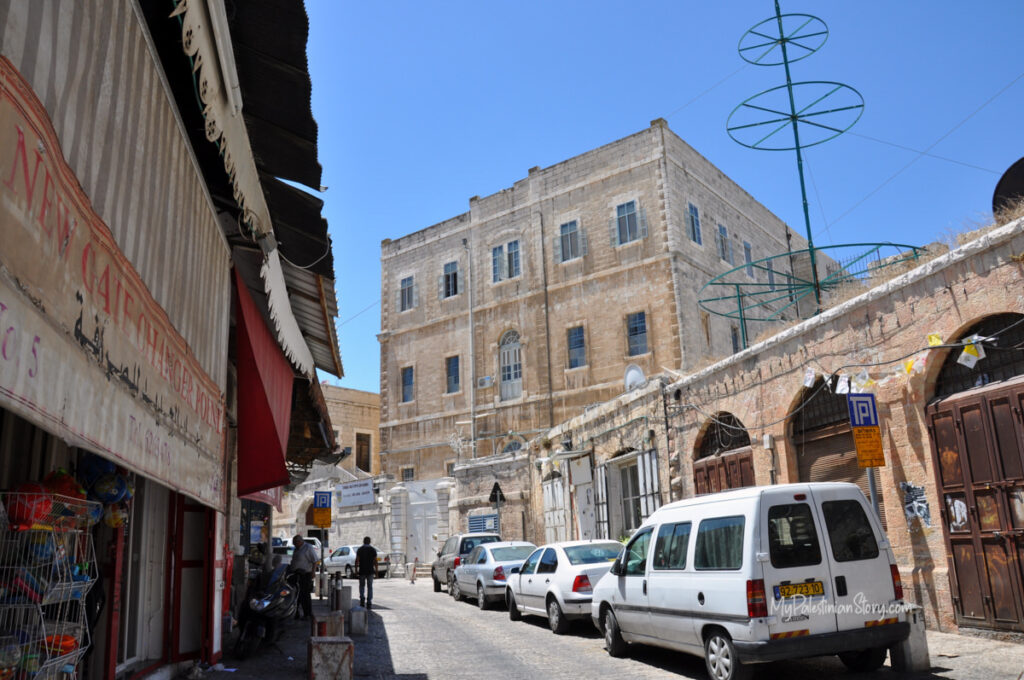
Then, trying to at least win the timing game, I headed out of the walled city hoping to catch the scene at Ben Yehuda before it shut down for the Sabbath. At Jaffa Gate, another checkpoint for the Muslim faithful deposited by a long line of buses on the main road.
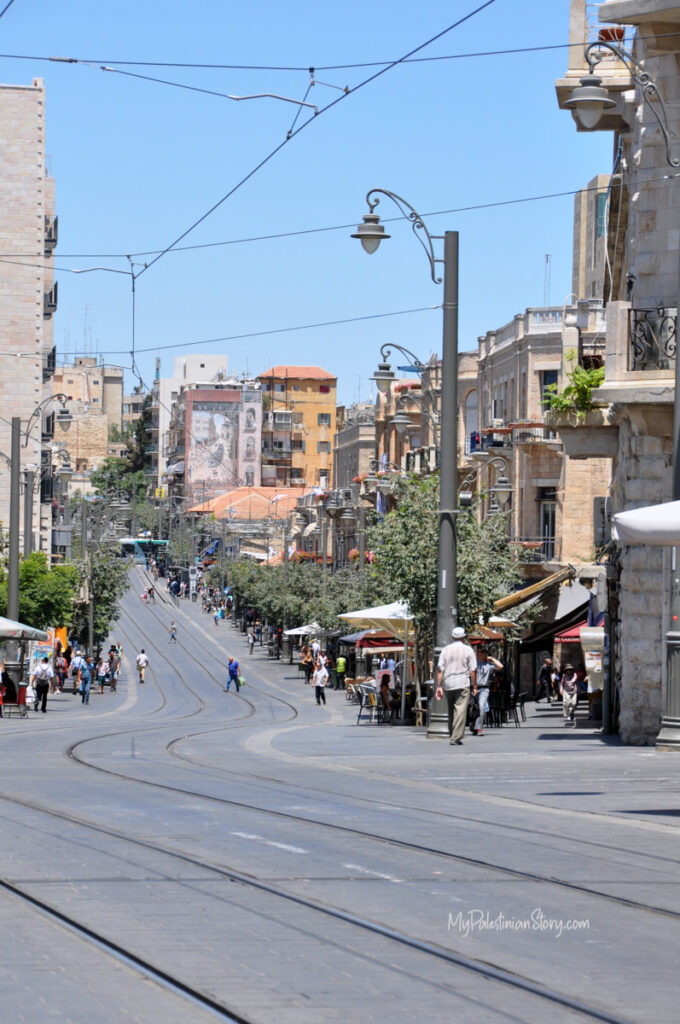
I left all that kerfuffle behind and made my way to Jaffa Road. With the exception of my visits to the neighbourhoods where my mother’s family and friends used to live (and of which I’m not ready to write just yet) I had not ventured much farther than the old city.
Jaffa road, one of Jerusalem’s longest and oldest streets, is lined with charming buildings evoking the British Mandate period, and the only vehicles allowed are those of the light rail that runs several times an hour. At Zion Square, Ben Yehuda street shoots off to the left and was much busier. It’s essentially a pedestrian mall. I was hoping to find a place that served something like the delicious salads we’ve been enjoying the last few days in ‘West’ Jerusalem but all I could get was fast food (including kosher McDonalds).
It was hot, I was exhausted and hungry and dreaded the walk back. But, with the help of some friendly locals, I figured out how to get a ticket for the light rail which brought me swiftly back to Damascus Gate. The parking lot and surrounding streets were packed with cars and buses. More police cars and now police horses too, more barricades, tighter controls. Had to wait for a few minutes at the checkpoint for my turn.

“Passport, please!” I was taken aback. So far today my passport through all the checkpoints had been my tourist uniform (gal in sleeveless top, Bermuda shorts, sneakers and cap, backpack over the shoulders, camera in hand.) But these guys were upping the ante. “Don’t have it with me,” I said. I explained that I’m staying in a hotel in the old city and she let me through, admonishing me not to go out again without my passport. “This is a strange country,” she said.
It bears repeating: This is a strange country! ❖
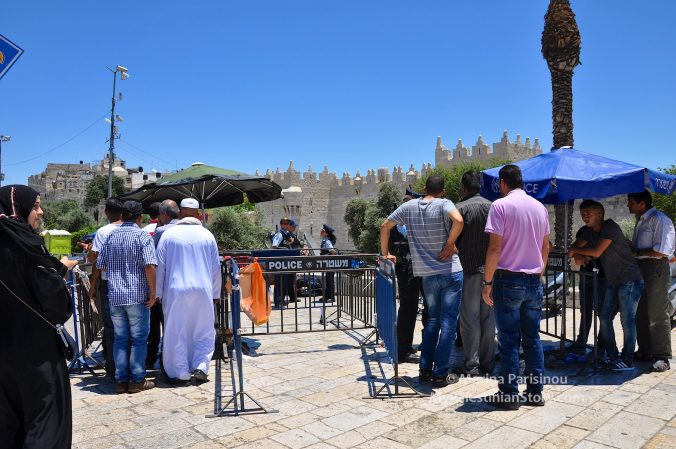
Leave a Reply